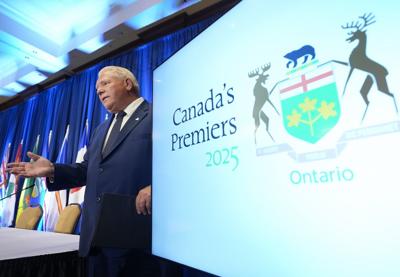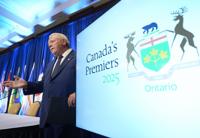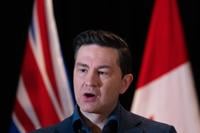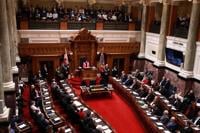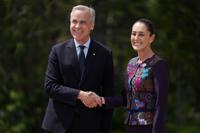OTTAWA - Some premiers say they want to have more local control over the immigration system — but experts say what the system really needs is a national conversation on immigration reform that shores up public support.
"Most of the existing policies have been formulated on the fly without any evidence or serious impact evaluations of what the various classes of immigrants are, how they're performing economically and otherwise," said Michael Trebilcock, a retired academic and co-author of two books on immigration policy.
"So it's basically research-free."
As the premiers and territorial leaders were wrapping up their three-day meeting in Huntsville, Ont., late last month, they called for an increase to economic immigration levels to fill local labour gaps and said they would use their constitutional powers to seize more control over immigration and issue work permits.
Ontario Premier Doug Ford later walked back his vow to issue work permits to asylum seekers.
"Do I want the whole immigration system on the shoulder of the province? No. Would I like to be treated the same way as Quebec? Yes, and so would every other province and territory," Ford said last Monday.
Quebec has its own distinct immigration system through an agreement with the federal government. The province is able to choose who can immigrate to Quebec based on its own criteria, with French language skills being a significant factor.
David Piccini, Ontario's immigration minister, said last Monday that the province also wants to see more financial support from Ottawa to help pay for social services strained by a high number of asylum seekers landing in Ontario.
Ninette Kelley, a former United Nations High Commissioner for Refugees official and a former member of Canada's Immigration and Refugee Board, said that provincial control over immigration has grown significantly over the last two decades.
"They know what their provinces need today, and they want to make sure they get the labour in that is required to meet those demands," she said.
"But at the same time, there's been absolutely no evaluation that I can see of how those programs are implemented or what effect they're having."
Trebilcock said the premiers' concerns need to be taken seriously because increased immigration boosts demand for health care and other provincial services.
He said that it's "disturbing" to see Canadians' support for immigration decline in multiple public opinion polls. He said current immigration policies lack broad support and he believes a comprehensive, public review is needed to rebuild that support through evidence-based policies.
"What we see at present is often piecemeal, on-the-fly changes in reaction to particular concerns that have surfaced in the media ... international students, temporary foreign workers," he said.
Kelley said that, instead of a multi-year exercise like a national inquiry, a top-to-bottom immigration system review could be conducted quickly with "the right people at the table."
Saskatchewan Immigration Minister Jim Reiter told °µÍø½ûÇø that he and the other subnational immigration ministers have told Ottawa they want to be seen more as partners in immigration, not stakeholders.
"We need more influence in the decision-making of this because so much of the economic stream needs to be targeted depending on the specific needs of each province," Reiter said.
The federal government last year slashed the number of slots in the Provincial Nominee Program from 110,000 to 55,000 as part of broader efforts to rein in immigration.
The program allows provinces and territories to nominate individuals for permanent residence based on their skills and ability to contribute to the economy. Each province and territory has its own set of program streams targeting different types of immigrants based on factors like skills or business experience.
Reiter said provincial immigration ministers want to see the Provincial Nominee Program return to its previous levels.
He said that while he understands the need to reduce the number of temporary visas, that shouldn't come at the expense of economic immigrants.
"We've had to restrict (the Saskatchewan Immigrant Nominee Program) down to three streams now to a large degree because we just don't have enough spots anymore," Reiter said.
Reiter said that of the 3,600 spots Saskatchewan has for its immigrant nominee program, three-quarters have to go to temporary workers, so the province is prioritizing nominees who work in health care and skilled trades.
"We've got the largest potash mine in the world being built ... just outside of Saskatoon and that company, BHP, every time we meet with them they raise the issue that skilled trades are an issue. So this is having a detrimental effect on economic growth," he said.
Trebilcock said that if provinces are focused on using immigration to strengthen their local labour markets, steps could be taken to make it easier to recognize immigrants' foreign credentials in fields like law and medicine.
With federal immigration decisions having provincial consequences, Kelley said, running an effective immigration system requires close collaboration between all levels of government.
"So that speaks to the need for really tight co-operation between the federal government and the provincial government and municipalities, both in the setting of levels and in the housing and medical policies that are currently in place so that we can accommodate those who we're letting in," she said.
This report by °µÍø½ûÇø was first published Aug. 4, 2025.

